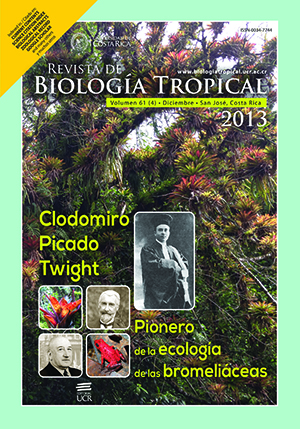Abstract
The Atlantic Forest represents one of the global priority eco-regions for biodiversity conservation. In Argentina, this is represented by the Paranense Forest, which occupies much of the Misiones Province. In this paper, an updated list of land mollusks from Misiones Province is presented, and its species richness was evaluated comparing protected and unprotected areas. For this, we reviewed La Plata Museum Mollusk Collection, updated the literature review, and developed some field work between 2009 and 2010. For the areographic work, a grid (50x50km) was applied to a Misiones province map. In this region, large areas of native vegetation constituting the Paranaense Forest still persist, and include protected areas such as the Iguazú National Park and Puerto Península Provincial Park. These areas have been the most explored at the malacological level (both terrestrial and aquatic environments), a fact that is consistent with the greater number of records found, which may also be the explanation for the highest number of species recorded in the region. A database containing 497 records was compiled. The number of species occurring in this Province was increased from 28 to 56; 11 of which were exotic species. A total of 38 of the species occurred in protected areas and 53 in unprotected areas; and 25 species were micro-mollusks. Orthalicidae was the family with the highest species number (10) and the widest distribution, occupying 16/20 sampling units. Megalobulimus was the genus found in a greater number of sampling units (14/20). The highest values of specific richness of land gastropods were found in Northern Misiones (R=32). This richness was similar to that previously reported for the Tucumán Province, although species occurring in both provinces were mostly different. The richness in Misiones Province border areas, as the Republic of Paraguay and the state of Santa Catarina (Brazil), was about twice that found in the province. The present study showed the existence of poorly explored areas at malacological level, especially in Central and Eastern Misiones. Data presented here will allow focus future sampling efforts on such areas, so patterns of species distribution can be better defined.##plugins.facebook.comentarios##
Downloads
Download data is not yet available.






